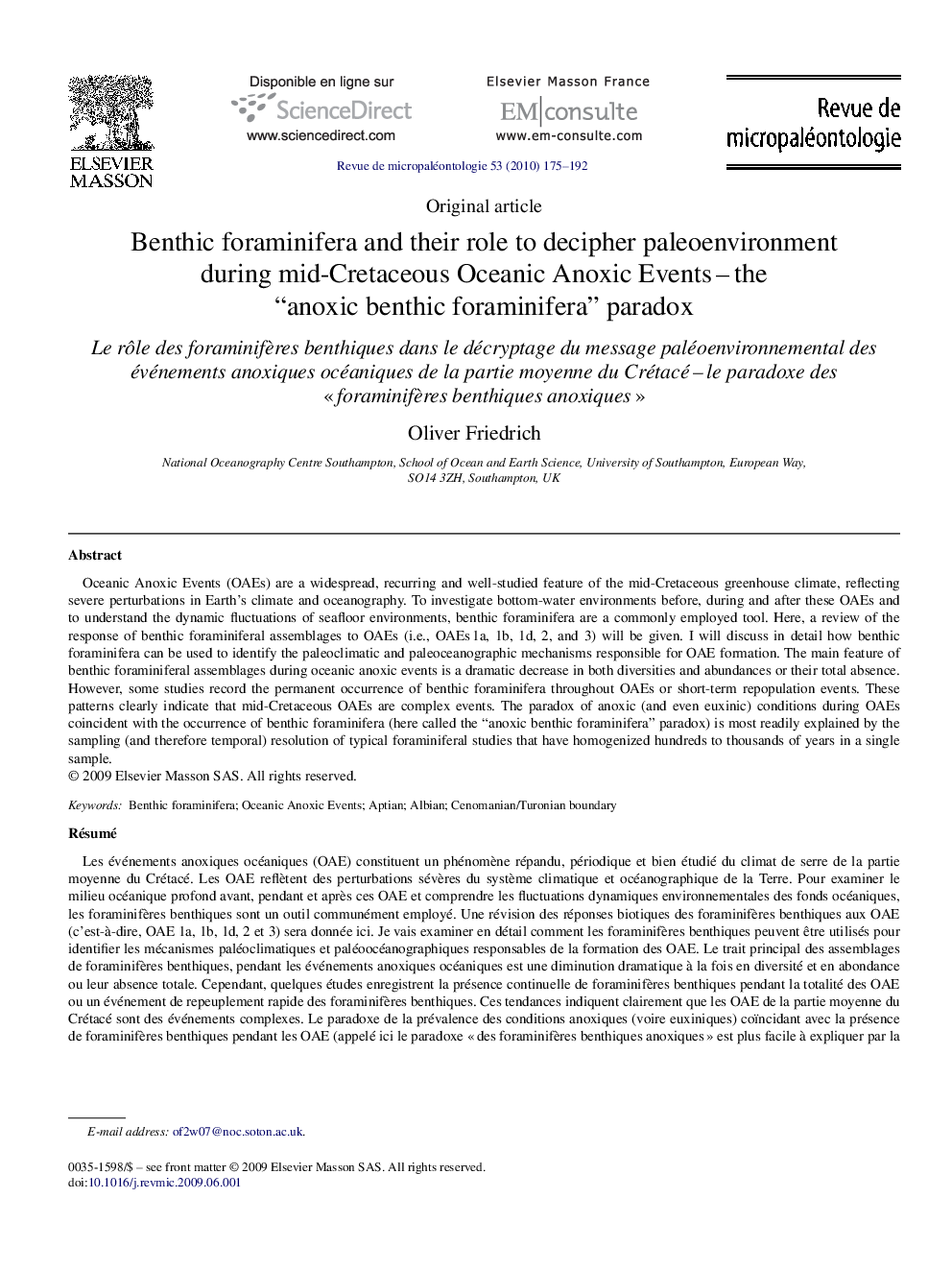| کد مقاله | کد نشریه | سال انتشار | مقاله انگلیسی | نسخه تمام متن |
|---|---|---|---|---|
| 4751483 | 1361071 | 2010 | 18 صفحه PDF | دانلود رایگان |

Oceanic Anoxic Events (OAEs) are a widespread, recurring and well-studied feature of the mid-Cretaceous greenhouse climate, reflecting severe perturbations in Earth's climate and oceanography. To investigate bottom-water environments before, during and after these OAEs and to understand the dynamic fluctuations of seafloor environments, benthic foraminifera are a commonly employed tool. Here, a review of the response of benthic foraminiferal assemblages to OAEs (i.e., OAEs 1a, 1b, 1d, 2, and 3) will be given. I will discuss in detail how benthic foraminifera can be used to identify the paleoclimatic and paleoceanographic mechanisms responsible for OAE formation. The main feature of benthic foraminiferal assemblages during oceanic anoxic events is a dramatic decrease in both diversities and abundances or their total absence. However, some studies record the permanent occurrence of benthic foraminifera throughout OAEs or short-term repopulation events. These patterns clearly indicate that mid-Cretaceous OAEs are complex events. The paradox of anoxic (and even euxinic) conditions during OAEs coincident with the occurrence of benthic foraminifera (here called the “anoxic benthic foraminifera” paradox) is most readily explained by the sampling (and therefore temporal) resolution of typical foraminiferal studies that have homogenized hundreds to thousands of years in a single sample.
RésuméLes événements anoxiques océaniques (OAE) constituent un phénomène répandu, périodique et bien étudié du climat de serre de la partie moyenne du Crétacé. Les OAE reflètent des perturbations sévères du système climatique et océanographique de la Terre. Pour examiner le milieu océanique profond avant, pendant et après ces OAE et comprendre les fluctuations dynamiques environnementales des fonds océaniques, les foraminifères benthiques sont un outil communément employé. Une révision des réponses biotiques des foraminifères benthiques aux OAE (c’est-à-dire, OAE 1a, 1b, 1d, 2 et 3) sera donnée ici. Je vais examiner en détail comment les foraminifères benthiques peuvent être utilisés pour identifier les mécanismes paléoclimatiques et paléoocéanographiques responsables de la formation des OAE. Le trait principal des assemblages de foraminifères benthiques, pendant les événements anoxiques océaniques est une diminution dramatique à la fois en diversité et en abondance ou leur absence totale. Cependant, quelques études enregistrent la présence continuelle de foraminifères benthiques pendant la totalité des OAE ou un événement de repeuplement rapide des foraminifères benthiques. Ces tendances indiquent clairement que les OAE de la partie moyenne du Crétacé sont des événements complexes. Le paradoxe de la prévalence des conditions anoxiques (voire euxiniques) coïncidant avec la présence de foraminifères benthiques pendant les OAE (appelé ici le paradoxe « des foraminifères benthiques anoxiques » est plus facile à expliquer par la résolution de l’échantillonnage (et donc de la résolution temporelle) dans les études de foraminifères typiques ; le résultat étant l’homogénéisation dans un seul échantillon d’une centaine à des milliers d’années.
Journal: Revue de Micropaléontologie - Volume 53, Issue 3, July–September 2010, Pages 175–192